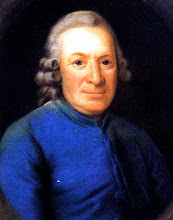Summary
The inevitable progression of Parkinson’s Disease (PD) is unresponsive to treatment. Dopamine (DA) agonists may promote the underlying neurodegenerative process. Combined 5‑hydroxytryoptophan (5-HTP), the immediate precursor of serotonin (5-HT
), and levodopa therapy should block DA induced PD progression because DA and 5-HT have countervailing actions in the immune system. While DA promotes inflammatory Th1 cytokines, neurotoxicity and neural apoptosis (programmed cell death), 5-HT promotes anti-inflammatory Th2 cytokines, acts as a neuroprotectant, and is antiapoptotic. Combined DA and 5-HT precursor therapy (PURSOR) with levodopa and 5-HTP suspensions titrated by taste, already associated with unprecedented partial remissions in another neurodegenerative disorder,
amyotrophic lateral sclerosis, should markedly improve symptomatic Parkinson’s treatment, decrease the incidence of levodopa toxicity, and, by restoring Th1/Th2 balance and putatively decreasing QUIN induced excitatory neurotoxicity, alleviate or even halt the progression of PD.
Seven Reasons:
A.
The buccal mucosal route permits both precursors to pass through the blood-brain barrier directly without first passing through the general circulation. Since this markedly diminishes the decarboxylation of either precursor prior to its entering the CNS, carbidopa is no longer necessary.
B.
Maximum therapeutic levodopa doses to assuage nigrostriatal DA deficiency should now be realized promptly and safely. Prior to the proprietary PURSOR protocol, the responsible clinician, concerned that increasing the levodopa dose could at any time induce severe adverse effects, knowing that the only clinical endpoints were the onset of levodopa toxicity or PD clinical improvement, recognizing there was no procedure to ameliorate levodopa toxicity except the passage of time, increased levodopa dosage slowly and gingerly. One can assume that many a PD patient never achieves maximal levodopa intervention because of this understandable concern. The PURSOR protocol permits one to increase levodopa more acutely since the administration of 5-HTP reverses the toxic symptoms of levodopa excess
C.
The neurotoxicity associated with PD and increased by levodopa administration presumptively can be reversed by the increase of 5-HT, a glutamate antagonist and a neuroprotectant with the ability to diminish excessive QUIN toxicity and cellular apoptosis associated with hyperstimulation.
D.
The PURSOR protocol, by promoting CNS 5-HT levels, should decrease or ablate the Th1>Th2 imbalances associated with autoimmune disorders and suppress or halt the underlying neurodegenerative PD process.
E.
The unprecedented and rapid partial remissions noted by patients with ALS treated with the PURSOR protocol strongly suggests that 5-HT is modulating the EAA-associated neurotoxicity endemic in neurodegenerative disorders.
F. Approximately 15% of DA treated PD patients develop obsessive/compulsive disorders. The addition of 5-HT to the regimen potentially ablates this as a problem.
G.
PD destroys both dopaminergic and serotoninergic cells. If for no other reason, the joint administration of both 5-HT and DA precursors makes empiric sense.
(Full text) More Formal Presentation




